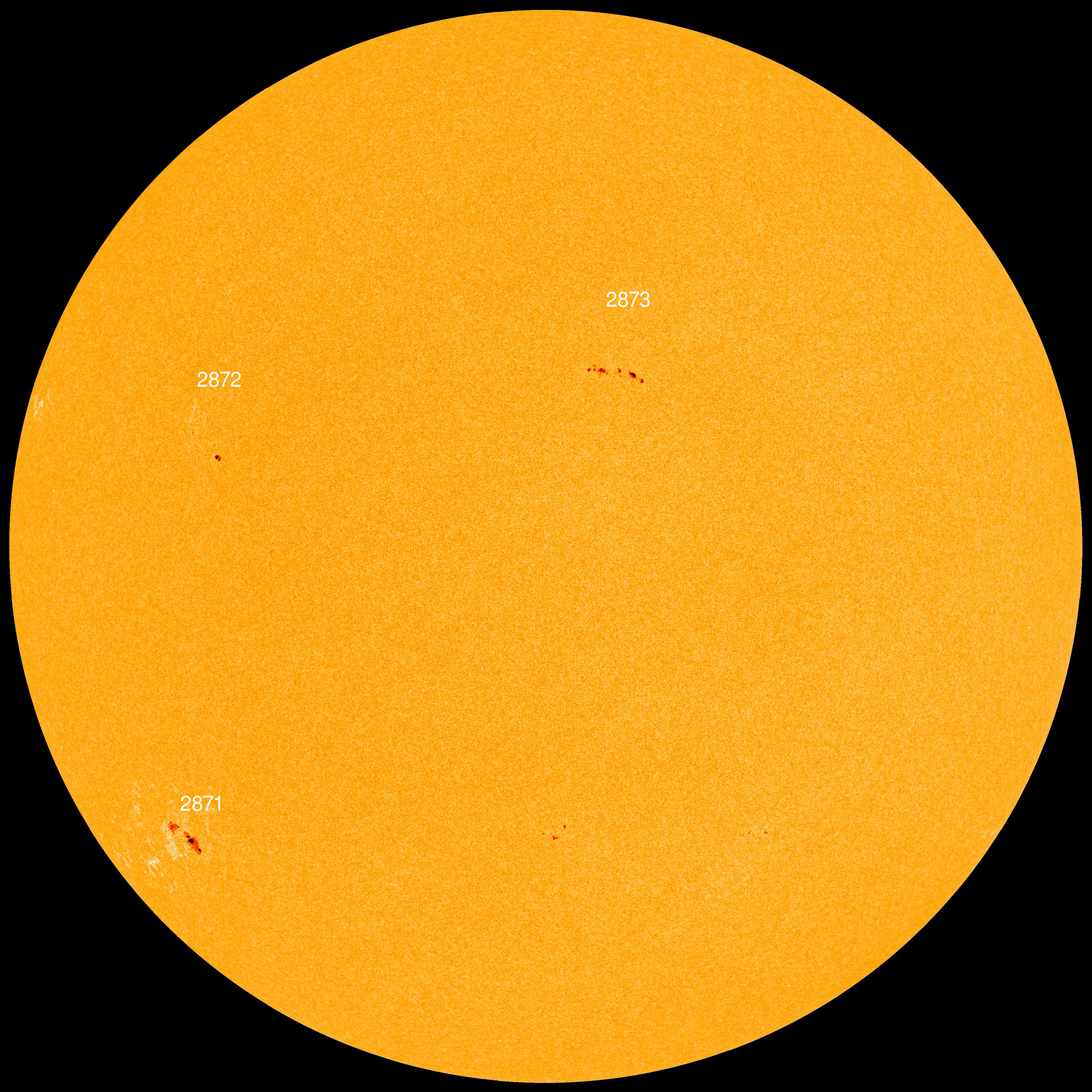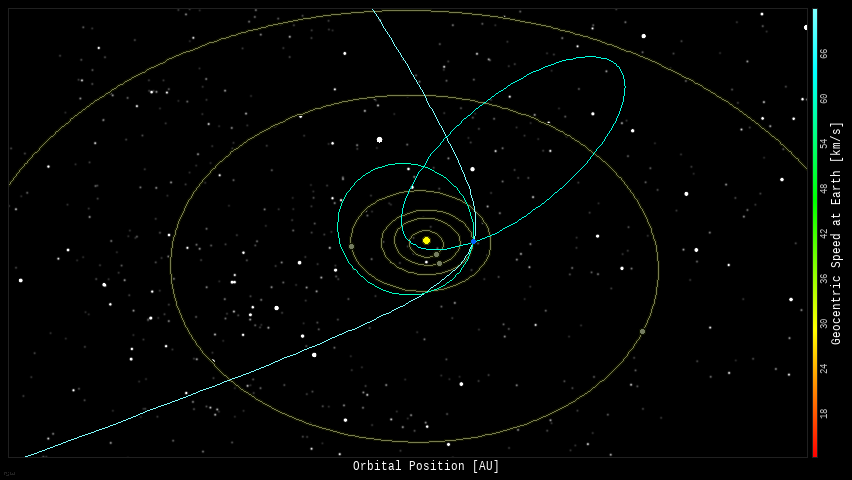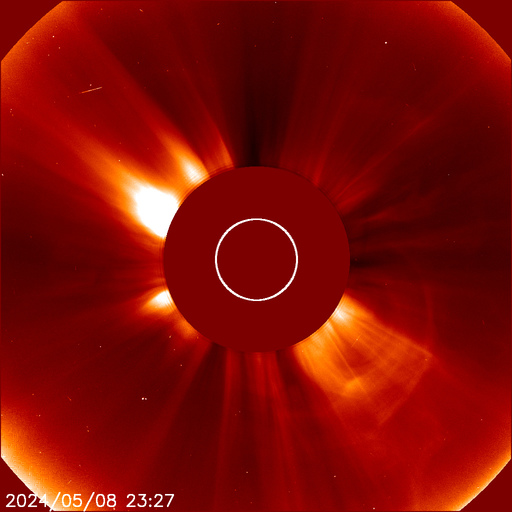Astronomy at the Beach!
The State of Michigan is incredibly lucky to have so many active astronomy clubs and amateur astronomers. Each September, the Great Lakes Association of Astronomy Clubs hosts the Astronomy at the Beach event – this will be their 25th year. This year the event will be held both Friday and Saturday Sept. 24 & 25.
Due to COVID, the event is being held online again this year; not a single astronomer wanted there to be any chance that the event or their equipment would be a vector for the spreading the virus – especially to children, who typically make up a good percentage of the attendees.
The original idea was to “only do telescope live-streaming,” but the Ford Amateur Astronomy Club (FAAC) decided to host various presentations on their Zoom channel all evening. This pushed ME over the edge, and I scheduled a presentation each evening too! We’ve even arranged to live-stream southern hemisphere skies!
Both Friday and Saturday, the FAAC will be hosting an “Astro Hangout” with a bunch of Michigan astronomers – including myself! Come and join us!

Jupiter and Saturn continue to appear in the southeastern sky after sunset all week.

Venus appears low above the southwestern horizon after sunset throughout December.

The Moon appears in the eastern sky with the Pleiades star cluster, and the star Aldebaran at midnight on Sept. 25th.

The Moon appears near the star Aldebaran in the eastern sky shortly after midnight on Sept. 27th.

The sky shortly after sunset this week:


- The Moon is a Waning Gibbous – rising after sunset, visible high in the sky after midnight, and visible to the southwest after sunrise.
- The Moon is NOT a Waning Gibbon – I recently heard that a teacher actually used that phrase…
- The Third Quarter Moon occurs on Sept. 28th – rising around midnight, and is visible to the south after sunrise.

If you click on the Moon image above, or click this link, you will go to NASA’s Moon Phase and Libration, 2021 page – it will show you what the Moon looks like right now. If you click the image on that page, you will download a high-rez TIFF image annotated with the names of prominent features – helpful for logging your lunar observations!
Moon News:
Forget “Snakes on a Plane” – how about “VIPERS on Luna!”

The Sun has 3 sunspots – one of them is pretty large!
SpaceWeather.com says: “Sunspot AR2871 is crackling with C-class solar flares.” They also report: “A dark filament of magnetism exploded away from the sun’s southern hemisphere on Sept. 19th. Watch the movie. NOAA analysts say the debris could reach Earth on Sept. 23rd in the form of a weak CME. A likely glancing blow could spark minor G1-class geomagnetic storms.”

You can view the Sun in near real-time, in multiple frequencies here: SDO-The Sun Now.
You can create your own time-lapse movies of the Sun here: AIA/HMI Browse Data.
You can browse all the SDO images of the Sun from 2010 to the present here: Browse SDO archive.
Amateur Solar Astrophotography

Solar Corona
Solar wind speed is 336.8 km/sec ▼ with a density of 7.7 protons/cm3 ▲ at 1420 UT.
Click here to see a near real-time animation of the corona and solar wind from the Solar & Heliospheric Observatory (SOHO).
Sun News:

- Near-Earth Objects (NEOs) discovered this month: 257, this year: 2062 (+64), all time: 26,898 (+65)
- Potentially Hazardous Asteroids (PHAs): 2207 (+2 updated 2021-09-14)
- Total Minor Planets discovered (NASA): 1,113,527 (updated 2021-08-17) – still not been updated for weeks.
- Total Minor Planets discovered (MPC): 1,116,788 (-28, updated 2021-09-21) – after weeks of not being updated, this number goes down!
Upcoming Earth-asteroid encounters:
| Asteroid | Date(UT) | Miss Distance | Velocity (km/s) | Diameter (m) |
| 2021 RV19 | 2021-Sep-21 | 7.7 LD | 9.5 | 20 |
| 2021 RX9 | 2021-Sep-21 | 8.3 LD | 14.6 | 23 |
| 2021 RP9 | 2021-Sep-21 | 15.8 LD | 18 | 46 |
| 2021 RN16 | 2021-Sep-21 | 1.3 LD | 9.7 | 7 |
| 2021 SO | 2021-Sep-22 | 15.2 LD | 5.7 | 30 |
| 2021 RS | 2021-Sep-22 | 18.6 LD | 3.4 | 37 |
| 2021 NY1 | 2021-Sep-22 | 3.9 LD | 9.4 | 177 |
| 2021 SK | 2021-Sep-24 | 13.3 LD | 12.8 | 30 |
| 2021 QV6 | 2021-Sep-24 | 9.3 LD | 13.1 | 96 |
| 2019 SF6 | 2021-Sep-26 | 16.4 LD | 8.6 | 20 |
| 2021 RP10 | 2021-Sep-27 | 9.7 LD | 16.4 | 41 |
| 2021 RG19 | 2021-Sep-28 | 2.2 LD | 15.3 | 35 |
| 2021 RM5 | 2021-Sep-30 | 10.9 LD | 4.1 | 19 |
| 2021 RF2 | 2021-Sep-30 | 7.3 LD | 5.4 | 25 |
| 2021 RP12 | 2021-Oct-06 | 5.1 LD | 9.5 | 40 |
| 1998 SD9 | 2021-Oct-06 | 10.6 LD | 10.8 | 59 |
| 2015 TQ21 | 2021-Oct-07 | 10.7 LD | 20.7 | 12 |
| 2021 RF5 | 2021-Oct-10 | 19.9 LD | 8.8 | 42 |
| 2021 QF5 | 2021-Oct-11 | 15.4 LD | 7.1 | 51 |
| 2019 SE5 | 2021-Oct-11 | 16.3 LD | 6.6 | 16 |
| 2020 TH6 | 2021-Oct-19 | 7.3 LD | 5.9 | 6 |
| 1996 VB3 | 2021-Oct-20 | 8.8 LD | 15.3 | 135 |
| 2021 RE10 | 2021-Oct-21 | 15.5 LD | 5.1 | 54 |
| 2017 SJ20 | 2021-Oct-25 | 18.7 LD | 15.7 | 123 |
| 2019 UW6 | 2021-Oct-26 | 8 LD | 11.1 | 17 |
| 2009 WY7 | 2021-Nov-02 | 19.2 LD | 14.7 | 54 |
| 2017 TS3 | 2021-Nov-02 | 13.9 LD | 9.9 | 135 |
| 2005 VL1 | 2021-Nov-04 | 17 LD | 5.2 | 18 |
| 2020 KA | 2021-Nov-06 | 14.9 LD | 4.8 | 11 |
| 2019 XS | 2021-Nov-09 | 1.5 LD | 10.7 | 65 |
| 2017 WG14 | 2021-Nov-10 | 18.6 LD | 11.6 | 45 |
| 2004 UE | 2021-Nov-13 | 11.1 LD | 13.2 | 178 |
| 2016 VR | 2021-Nov-15 | 8 LD | 8.7 | 20 |
| 2010 VK139 | 2021-Nov-15 | 6.4 LD | 13.9 | 65 |
| 2019 VL5 | 2021-Nov-15 | 8.6 LD | 8 | 23 |
Asteroid News:

On September 20, 2021, the NASA All Sky Fireball Network reported 5 fireballs!
(5 sporadics)

Fireball News:
If you see a bright meteor or a fireball, please REPORT IT to the American Meteor Society and the International Meteor Organization!

Position of the planets & several spacecraft in the inner solar system on September 21th:

Position of the planets in the middle solar system:

Position of the planets in the outer solar system:

Solar System News
This conversation caught my eye

See a list of current NASA missions here: https://www.jpl.nasa.gov/missions?mission_status=current

ex·o·plan·et /ˈeksōˌplanət/, noun: a planet orbiting a star other than the Sun.
Data from the NASA Exoplanet Archive
* Confirmed Planets Discovered by TESS refers to the number planets that have been published in the refereed astronomical literature.
* TESS Project Candidates refers to the total number of transit-like events that appear to be astrophysical in origin, including false positives as identified by the TESS Project.
* TESS Project Candidates Yet To Be Confirmed refers to the number of TESS Project Candidates that have not yet been dispositioned as a Confirmed Planet or False Positive.
Exoplanet News:

- Visit an International Dark Sky Park: https://www.darksky.org/our-work/conservation/idsp/parks/
- If you live in Michigan, visit the Michigan Dark Skies site: https://sites.lsa.umich.edu/darkskies/

Education and STEM
Astronomy at the Beach
Michigan astronomers can’t wait to be able to host the Astronomy at the Beach event live and in-person again – join us online this weekend!

What I was listening to while I was writing this:
Software Apps used for this post:
NASA Eyes on the Solar System: an immersive 3D solar system and space mission simulator – free for the PC /MAC.
SpaceEngine: a free 3D Universe Simulator for Windows. Steam version with VR support available.
Stellarium: a free open source planetarium app for PC/MAC/Linux. It’s a great tool for planning observing sessions. A web-based version of Stellarium is also available.





